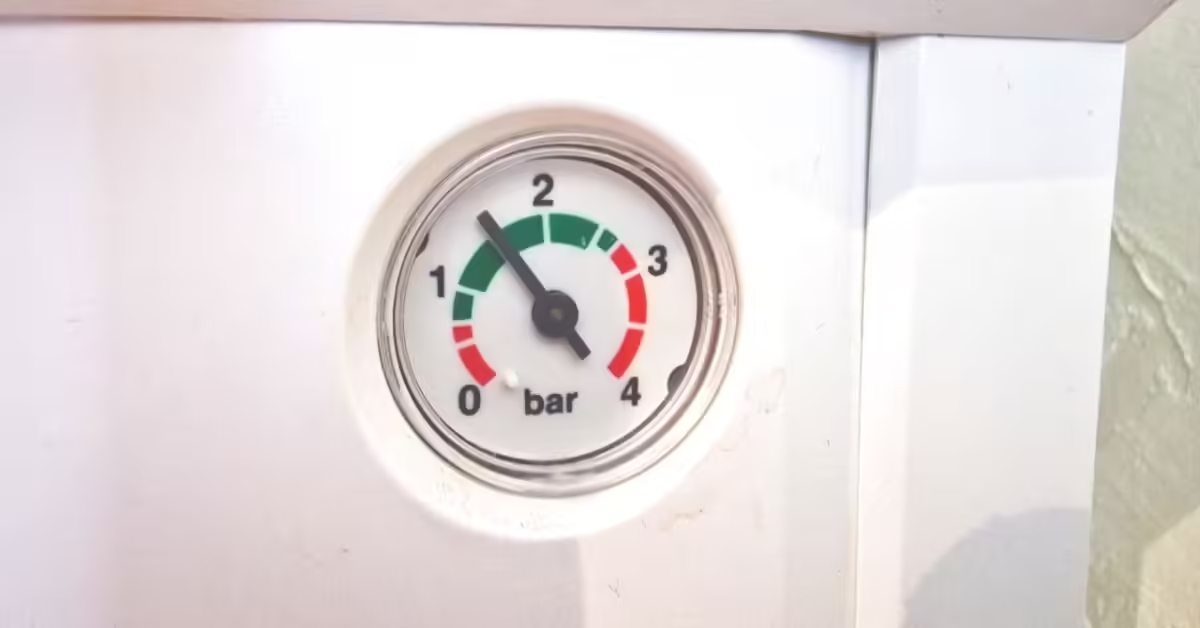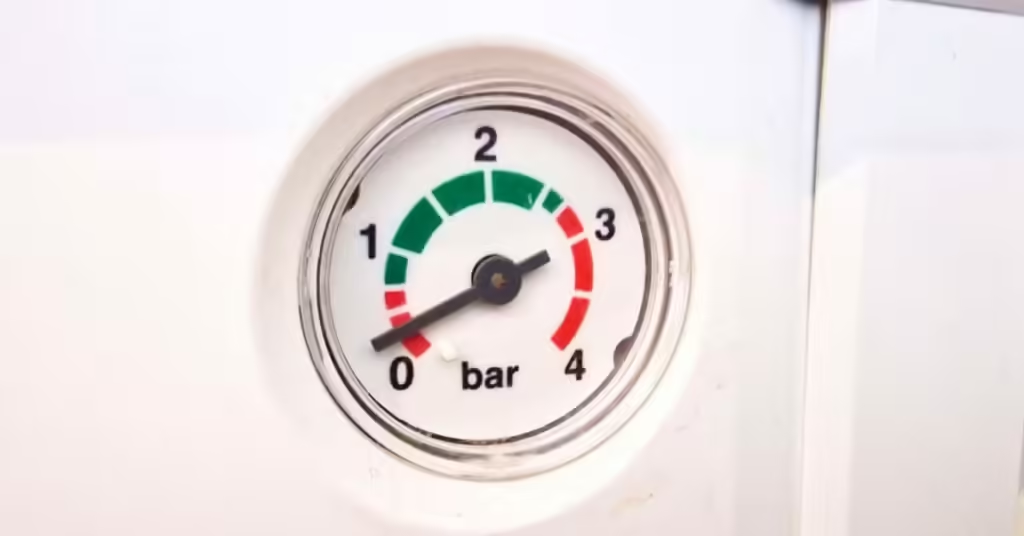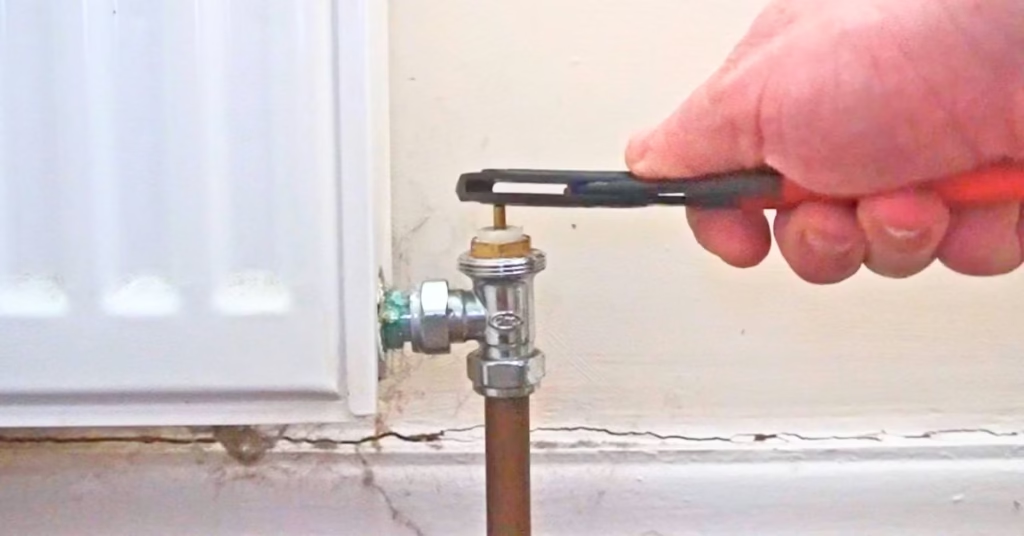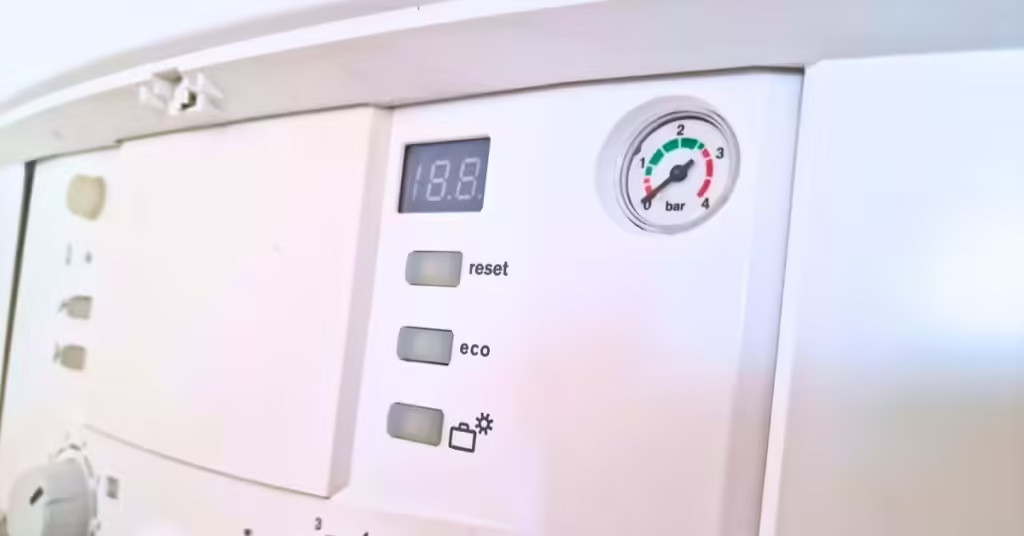Last updated on March 2nd, 2025
When your pressure drops too low, the boiler will stop working, which means no heating or hot water. The pressure should be between 1 and 1.5 bar when the radiators are cold. I have been repairing and servicing boilers for over a decade and have fixed many boiler pressure problems.
Glow-worm boiler pressure explained
Glow-worm boilers have a safety device called a pressure relief valve (PRV). If the pressure reaches 3 bar the PRV will open and the water will be let out as a safety precaution, the pressure gauge will drop to zero.
If your pressure is under 1 bar, you should increase it. If it’s over 1.5 bar when the heating is off and the radiators are cold, you should reduce it. The boiler pressure can rise to over 2 bar when the heating is on. This is perfectly normal as the heat expands the water inside the radiators when the heating is turned on.
Boiler pressure too low
Low boiler pressure is very common and can cause your boiler to stop working. If your pressure becomes too low you need to repressurise it. If the pressure drops below 1 bar you should increase it.
How to increase the pressure:
- Open one valve fully (only if there are two valves)
- Open the other valve slowly until you can hear the water
- When the pressure has reached 1 to 1.5 bar close both valves
- Reset the boiler (if needed)
- Turn the heating on
Do not open both filling loop valves fully straight away as the water pressure in the house might be too much for the boiler and cause the pressure to shoot up too high.
How often should you need to repressurise a boiler?
You shouldn’t need to repressurise your boiler at all. A pressurised heating system is sealed so if you need to increase the pressure regularly then the water is getting out. If you have to repressurise once or twice a year I wouldn’t worry about it.
Boiler pressure too high
There are many reasons for a boiler’s pressure to be too high. If the pressure reaches 3 bar the PRV will let the water out. So, if your pressure is above 1.5 bar when the heating is and the radiators are cold, you should reduce it. To reduce the pressure you must let some water (or air) out of the heating system.
How to reduce boiler pressure:
- Bleed a radiator
- Open a drain off valve
- Open the pressure relief valve
- Crack a nut
- Magnetic filter
The first thing you should do to reduce the pressure is bleed the air out of every radiator. There might not be any but if there is, removing it will drop the pressure. Bleeding water out of one radiator is the easiest way to reduce boiler pressure but also the slowest.
Boiler keeps losing pressure
A boiler that keeps losing pressure means there’s a problem that needs to be fixed.
Most common reasons:
- A Leak on the central heating system
- The expansion vessel has lost its air
- Pressure relief valve passing water
- Filling loop open
You should check if the pressure is rising to 3 bar when the heating is on to narrow down the problem. If the pressure is dropping to zero without rising too high first, you most likely have a leak somewhere on the system.
More Glow-worm boiler guides
- Glow-worm boiler F28 fault
- Glow-worm boiler F83 fault
- Glow-worm boiler F75 fault
- Glow-worm boiler F22 fault
If your boiler pressure is too low or too high, fixing it is important. Repressurising a Glow-worm boiler is an easy job. It can save you from paying a plumber to do an easy task.
If you have to keep repressurising your boiler, you should get that problem found and fixed as soon as possible.
Have any questions? Drop them in the comments below, I’ll do my best to help! If you found this post helpful, don’t forget to share it with others who might benefit.





I have tried to increase the pressure to 1.5 but unfortunately it increased to 1.8. I’ve tried to turn the yellow knob which I think is to release some of the water but its too stiff. Is there a problem with leaving this at 1.8. I don’t know how to do anything else. Thank you.
Mary Morton
Hi Mary, 1.8 bar will be fine, nothing to worry about.
I only have 1 tap on my glow worm boiler ?
Some filling loops only have one valve to open to repressurise the boiler. Just make sure the other handle hasn’t snapped off or been removed
I have recently fitted new parts on leaking valve on radiator, pressurised system back up and bled radiators, OK. But since then pressure keeps on dropping down to zero overnight takes about 6 hrs?
It might be a leak under the floor downstairs that you can’t see. You should check the copper blow off pipe outside for signs of water coming out and also check to see how much the boiler pressure increases when the heating is on.
Fixed leak on radiator valve, repressurized system all ok, but keeps dropping off to zero overnight. Cannot find any leaks in apartment?